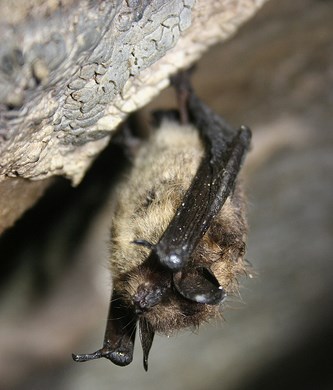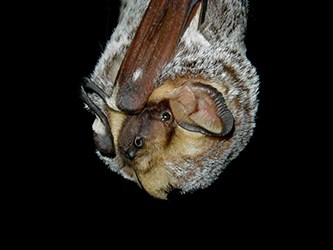Bats use a lot of energy flying around and must consume a lot of food, such as insects, to fuel their daily activities. When cold weather drives insects away, bats must choose to hunker down and hibernate or migrate to warmer areas with more abundant food supply. Some bat species hibernate, some migrate, and some do both. And in temperate climates, like Florida, bats may be able to stay year round.

USFWS/Froschauer
Hibernate
Hibernation involves an extreme reduction in metabolic rate, heart rate, and respiratory rate that allows a bat to survive long periods of time without food. A bat's heart rate drops from 200-300 beats per minute to 10 beats per minute, and it may go minutes without taking a breath. The bat's body temperature can also drop to near freezing, depending on the temperature of the bat's surroundings. Other bodily functions also slow down, which reduces energy costs by about 98%. In this state of "torpor," bats are experts in high energy efficiency!
Bats may enter torpor for just a few hours to save energy during a cold day, or they can remain in torpor for up to a month while hibernating over winter. During hibernation, bats cycle through periods of torpor interrupted by brief periods of arousal when their body temperatures return to normal for a few hours. Some species, such as this little brown bat, may hibernate for more than six months waiting for the return of insects in the spring. Bats choose places like caves, mines, rock crevices, and other structures with ideal temperature and humidity for hibernation. Places where bats hibernate are called hibernacula.

Paul Cryan
Migrate
Many species of bats move between summer and winter habitats. Some search for more abundant food sources in warmer locations, and others seek ideal habitats for hibernating in winter or raising young in summer. Most species that roost in trees, such as hoary bats, migrate south for winter when insects become scarce. In the fall, hundreds of hoary bats from across the U.S. gather along the coasts and in northern Mexico. Mexican free-tailed bats that roost in Carlsbad Caverns during the summer also migrate to Mexico over winter.
Learn more about another bat that migrates, the lesser long-nose bat.
Last updated: October 17, 2024
